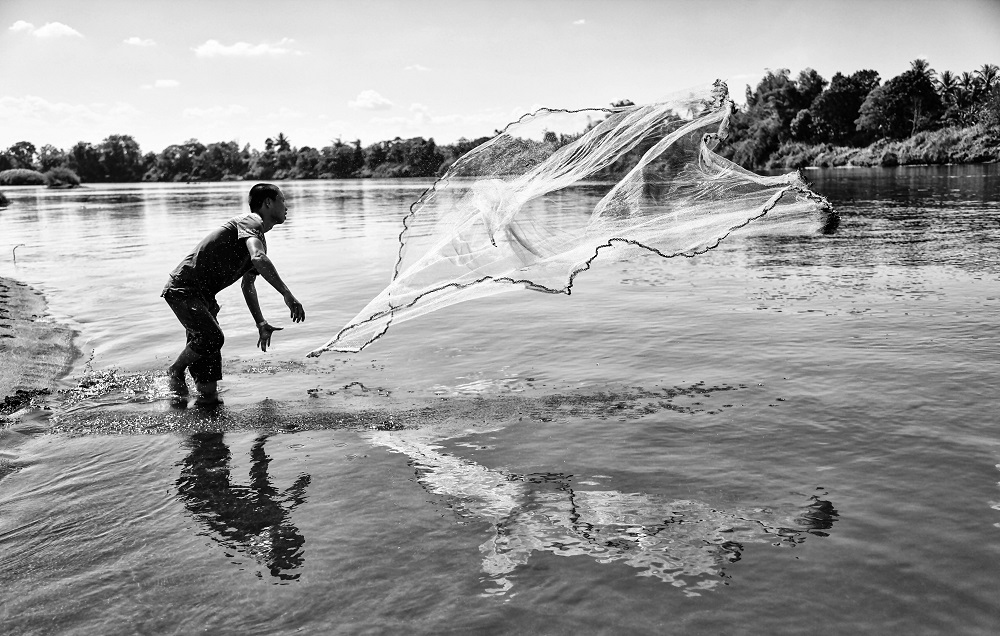How to fish flounder depends on the best selection of bait and tackle techniques, which vary by bay, bay, and ocean. The best anglers know how to catch flounders and what fish species are involved, but it is also important to understand the fish on the biological level as this gives us important information about the behavior of the fish, where they find themselves, and how they react to certain baits. The most popular methods of flounder fishing are drifting and wobbling bait, but we advise first to read Kissing the Flounders: Fishing to see the basic tips you need to know. One of the options is to use pontoon 21 gear in order to count fishing as flounder.
In the beginning: Local anglers
Check with the local anglers to find out the usual flounder sizes that live in the area where you want to fish. Use a fish ruler before bringing your fish into the water to check that your fish are within the legal sizes of the area where you catch flounder. Prepare bait to fish for live shrimp or oyster shells to catch larger amounts of fish.
The water depth in this region of North Carolina and South Carolina makes it easy for anglers to find flounders. In addition, flounders can be seen during low tide on flat plains and on promontories. It is to be expected that there will be various tidal waves in the summer, in particular, tidal waves in the south and on the Gulf coast and larger tidal waves at high tide.
The Flounders migrate during the spawning season during the late autumn and winter months and the best time is in spring and autumn for beginners to catch flounders, when they migrate from estuaries to coastal waters. Flounders are year-round fish in Texas, but the best times to attack them are during their fall migration to the Gulf region. The best time to think about the fisheries that flounder along the coast in autumn is when they move from the back bays and bays, as they condense in the spring in the mouth of the rear bay.
Flounders feed
Flounders feed on a variety of baits, including shrimp, pinfish, barbels, and other small baitfish. In summer, flounder can be caught by surfing, drift fishing, trolling, or fishing near the jetties. In newer oceans, flounder fishing is developing near the coast near wrecks and hard bottom areas.
The best bait for flounder fishing in winter is color and I like bright colors like pearls, white, chartreuse, pink, electric poultry colors, and nature, but what seems to work the best are plastics with curly tails. You can use maggots with yellow or red floats if you like them.
Clear waters are important
Fishing in clear water is helpful to catch the flounder they see. Regardless of the water temperature, flounders tend to stay close to rocky outcrops and steep slopes. If you see a beach in spring and summer, it’s when you’re floundering on the shore.
Underwater Flounder Gigging lamps illuminate the flounders laid out on the bay floor or in the water magnificently, and the light does a really great job of illuminating the fish. Modern flounder lights can be mounted on water or underwater. I have noticed that some anglers have built cages that cover a large area of water to aim at the fidget.
Conventional gear is good for floundering in deep waters with strong currents. The same equipment that anglers use for coastal and saltwater species such as redfish and striped perch will also work well for hunting flounders. Anglers fishing for flounder on offshore structures can choose whether to anchor or let the fish drift.
Most popular baits to use
The two most popular live bait for flounder fishing are minnow and shrimp. A medium spinning outfit or a light conventional outfit will cover all floundering fishing situations.
If possible, bring live bait such as barbs and minnows to local flounder festivals. If you are able to combine the two and find an area with a decent amount of bait and fish that will invariably flounder, then your gig is made available to help you catch your fish.
Flounder is a popular destination for anglers who enjoy fishing in the Chesapeake Bay, anglers who explore the bays on the mid-Atlantic coast, and many who fish in Atlantic coastal waters. Generally, a flounder (or fluke) diet consists of shrimp, crab, and small flukes baited with fish such as sardines, shad, mullets, and minnows.
You can catch flounder with a variety of natural baits, but if you had to ask yourself “What is the best bait for winter flounder fishing?”. The answer would be mullet. Many anglers start with a cut-off bait, a live artificial bait, and adjust their bait accordingly, which gets the most attention from flounders (e.g. Leeches).
Artificial bait
Anglers who use artificial bait for flounders follow the same approach of throwing and drifting. The reason for this is that the technique of presenting bait or bait along the bottom is most successful with flounders. The moving water is crucial for floundering leeches, as it drives the bait that is being fished (shrimp and crayfish) from the top of the fish into its target zone.
With a 4-inch soft plastic paddle tail bait or a 1 / 2-ounce Jighead cast with a slingshot rod, anglers can cover a lot of water in search of flies. Southern flounders can be caught near bridges, docks, and the coast in the ocean. They are also known as “black winters” and occur in shallow waters off the coast.
In the end
Cut-off baits stay on the hook longer, which is one of the reasons they are popular with anglers scanning fish for flounders. My biggest baitfish are small-eyed flounders, and when you fish in colorful waters, larger bait profiles increase the chance that they will see a jump. Check out duohook.ie for more information.
